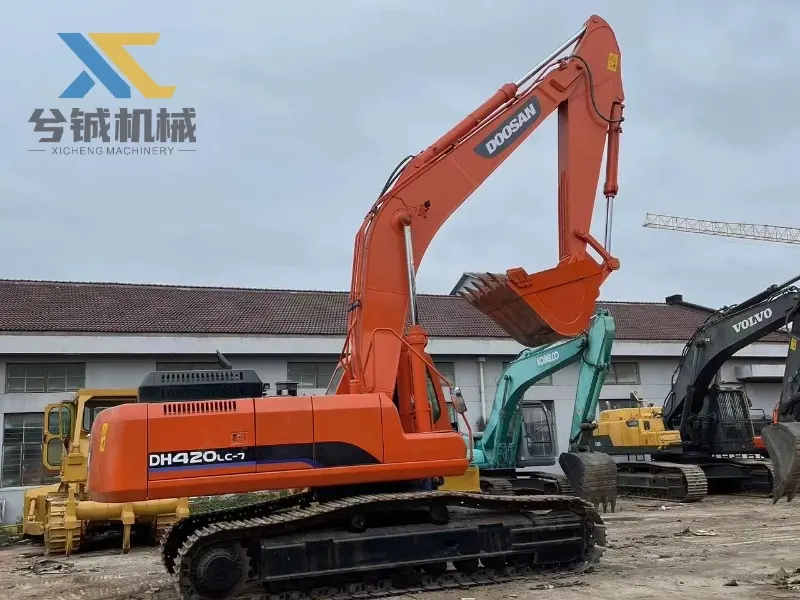Экскаватор-погрузчик: ключевое оборудование для строительства и гражданского строительства
Release time: 2024-10-21
A loader is a type of heavy machinery widely used in the construction and civil engineering industries. It is mainly used for loading, carrying and unloading materials, and is widely used in various operating scenarios such as earthworks, mines, and construction sites.
The main functions of a loader include:
Loading: A loader can quickly load materials (such as sand, soil, gravel, etc.) from the ground into a transport vehicle or other equipment. With its large-capacity bucket, a loader can complete a large amount of loading work in a short period of time.
Carrying: A loader can load materials, and carry them to a designated location. By rotating and moving the bucket, the loader can flexibly move materials on the site.
Unloading: A loader can unload materials to a predetermined location. This process usually involves tilting and lifting the bucket so that the material can fall accurately in the designated area.
Leveling and land preparation: Some loaders are equipped with attachments such as a land shovel, which can perform simple land preparation and leveling operations to prepare for subsequent construction.
According to different work requirements, loaders can be divided into several main types:
Wheel backhoe loader: This is the most common type, with high maneuverability and flexibility, suitable for working in various terrain conditions. Wheel loaders are usually used in urban construction and small construction sites.
Crawler loader: Compared with wheel loaders, crawler loaders have better stability and traction on uneven and muddy ground. They are usually used in earthwork and mining operations.
Small backhoe loader: This type of loader is small in size and suitable for working environments with limited space, such as urban construction and landscaping.
Multi-function loader: A loader equipped with a variety of attachments can complete a variety of work tasks, such as excavation, leveling and shoveling, with high flexibility.
The working principle of the loader is relatively simple. It is mainly composed of an engine, a transmission system, a hydraulic system and a bucket.
Engine: Provides power to the loader and drives the operation of the entire machine.
Transmission system: Transmits the power of the engine to the tires or tracks to enable the loader to move.
Hydraulic system: The hydraulic system is an important part of the loader, responsible for controlling the lifting, tilting and rotation of the bucket. Through the pressure changes of the hydraulic oil, the operator can flexibly control the various operations of the bucket.
Bucket: The bucket of the loader is usually made of high-strength materials and can withstand greater impact and pressure to complete the loading and handling tasks of heavy objects.
With the continuous advancement of science and technology, the loader industry is moving towards intelligence and environmental protection. The following are future development trends:
Intelligence: Many loaders will be equipped with advanced sensors and GPS systems, which can realize automated operations and remote monitoring, and improve operation efficiency and safety.
Environmental protection technology: In order to meet increasingly stringent environmental regulations, backhoe loader manufacturers are committed to developing more efficient engines and clean energy technologies to reduce emissions and energy consumption.
Versatility: Future loaders will pay more attention to versatility, and achieve a wider range of operating capabilities by adding various attachments and accessories to meet the needs of different customers.
Electrification: With the advancement of battery technology, electric loaders will gradually enter the market, reducing noise and emissions and improving the comfort of the working environment.
Loaders play a vital role in construction and civil engineering. With the continuous advancement of technology and changes in market demand, loaders will usher in a broader development prospect. Understanding the functions, types and working principles of loaders will help engineers and operators improve their operating efficiency,also provide a reference for equipment manufacturers to formulate strategies in a highly competitive market. With the continuous development of intelligent and environmentally friendly technologies, future loaders will surely be more efficient, flexible and environmentally friendly.



